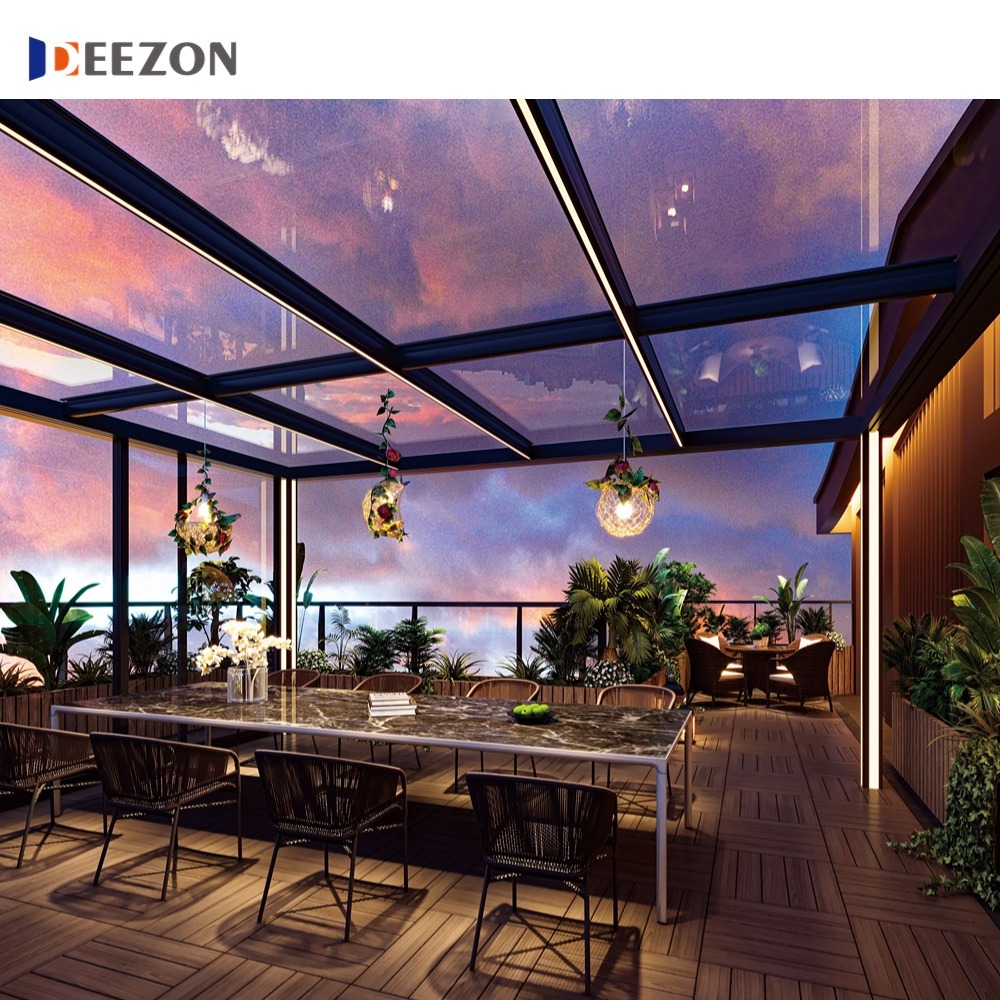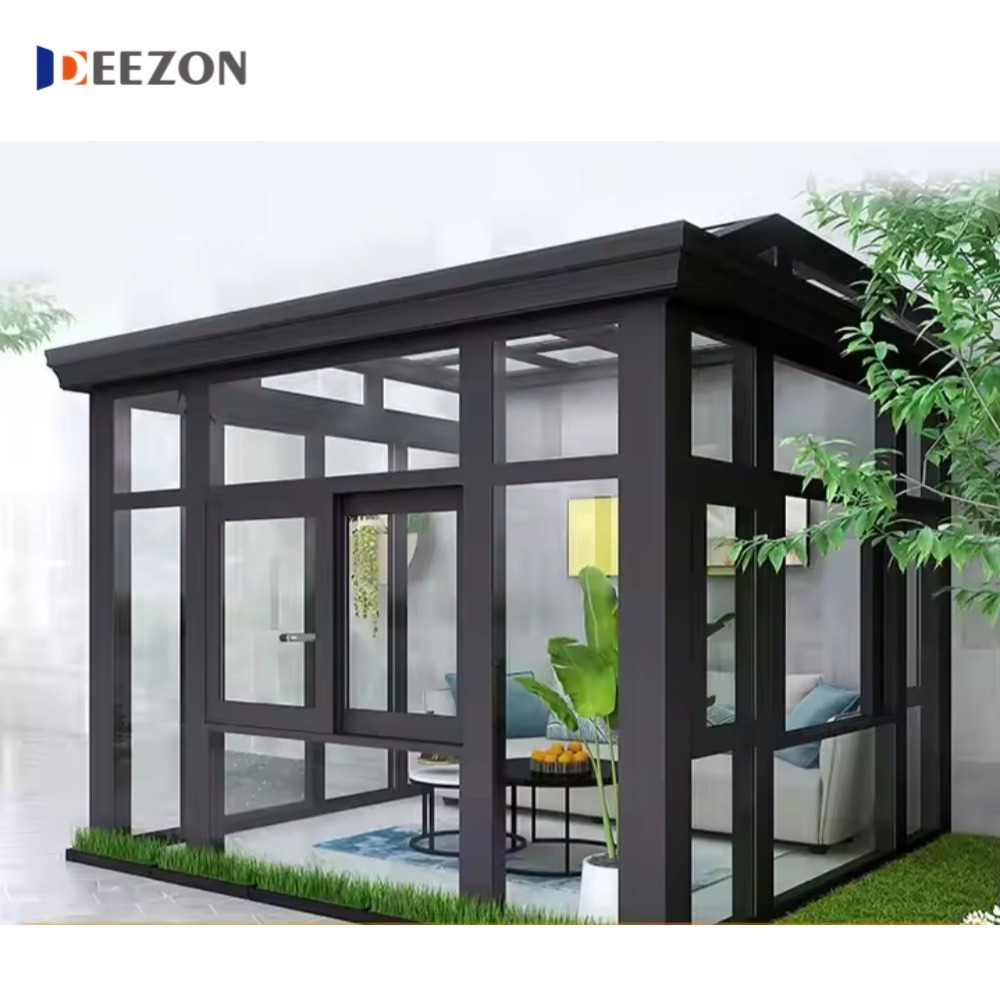Foshan Deezon Windows and Doors Co.,Ltd.
Louver Roofs: A Stylish Addition to Enhance Your Outdoor Living Experience
Jul 03,2025

Louver Roofs: A Stylish Addition to Enhance Your Outdoor Living Experience
In today’s world, creating a beautiful and functional outdoor space is more important than ever. One of the most stylish and practical additions you can make to your outdoor area is a **louver roof**. These innovative structures not only offer protection from the elements but also allow for customizable light and ventilation control. In this article, we will delve into the many benefits of louver roofs, design options, installation tips, and maintenance strategies, ensuring you have all the information you need to make the right choice for your home.
Table of Contents
- What Are Louver Roofs?
- Benefits of Louver Roofs
- Design Options for Louver Roofs
- Installation Guide for Louver Roofs
- Maintenance Tips for Louver Roofs
- Louver Roofs vs. Traditional Roofs
- Louver Roof Ideas for Your Outdoor Area
- Frequently Asked Questions
What Are Louver Roofs?
Louver roofs are architectural structures featuring adjustable slats that allow for ventilation and sunlight management. They can be installed over patios, decks, and outdoor dining areas, offering a seamless blend of style and functionality. Typically constructed from durable materials such as aluminum or wood, these roofs can be customized to suit various aesthetic preferences. The adjustable slats can be tilted to control the amount of sunlight entering the space, providing shade when needed while allowing for natural light to filter through.
Benefits of Louver Roofs
Investing in a louver roof comes with numerous advantages:
1. Enhanced Outdoor Comfort
One of the primary benefits of louver roofs is their ability to create a comfortable outdoor environment. By adjusting the slats, you can control the amount of sunlight and heat that enters your space, ensuring a pleasant atmosphere regardless of the weather.
2. Versatility in Design
Louver roofs are available in various styles, colors, and materials, allowing homeowners to customize their outdoor space according to their preferences. Whether you prefer a modern look or a more traditional aesthetic, there’s a louver roof design that will complement your home.
3. Increased Property Value
A well-designed outdoor space can significantly increase your home’s value. Louver roofs are an attractive feature that potential buyers will appreciate, making your property more appealing on the market.
4. Protection from the Elements
These roofs provide shelter from rain, wind, and harmful UV rays, allowing you to enjoy your outdoor space year-round. The adjustable slats can also prevent water pooling, minimizing potential damage to outdoor furniture and décor.
5. Energy Efficiency
By providing shade and ventilation, louver roofs can help reduce energy costs by keeping your home cooler during hot months. This can lead to a decrease in reliance on air conditioning, resulting in lower energy bills.
Design Options for Louver Roofs
When it comes to selecting a louver roof, there are several design options to consider:
1. Material Choices
Louver roofs can be made from various materials, each offering unique aesthetics and durability. Common materials include:
- Aluminum: Lightweight, corrosion-resistant, and available in multiple colors.
- Wood: Provides a natural and warm appearance, ideal for traditional homes.
- Vinyl: Offers a budget-friendly solution with low maintenance requirements.
2. Slat Orientation
The orientation of the slats can greatly affect the overall design of your louver roof. Options include horizontal, vertical, or angled slats, allowing you to customize the look to match your home.
3. Integrated Lighting
Many modern louver roofs come with integrated LED lighting options, enhancing the ambiance of your outdoor space during the evening. This feature is perfect for hosting gatherings and creating a cozy atmosphere.
4. Automated Systems
For added convenience, many louver roofs can be equipped with automated systems, allowing you to control the slats via remote control or smartphone app. This technology provides easy access to adjust the roof based on changing weather conditions.
Installation Guide for Louver Roofs
Installing a louver roof can be a rewarding DIY project or a job for professionals. Here’s a step-by-step guide to help you through the process:
1. Planning and Design
Begin by determining the location and size of your louver roof. Consider factors such as sunlight exposure, existing structures, and landscaping. Create a detailed design that includes measurements and material choices.
2. Obtain Necessary Permits
Before starting construction, check with your local building authority to determine if permits are required for installing a louver roof. Compliance with local regulations is crucial to avoid potential fines.
3. Prepare the Site
Clear the area where the louver roof will be installed. Ensure the ground is level and free from debris. If necessary, pour concrete footings to provide a stable foundation for the structure.
4. Assemble the Frame
Construct the frame using your chosen materials, ensuring that it is sturdy and able to support the weight of the roof. Follow manufacturer instructions for assembling any prefabricated components.
5. Install the Louver Slats
Once the frame is complete, carefully attach the louver slats according to your design. Ensure that they are securely fastened and can pivot smoothly.
6. Add Accessories and Finishing Touches
Install any additional features such as lighting, fans, or automated control systems. Finish the structure with weather-resistant paint or stains to protect it from the elements.
Maintenance Tips for Louver Roofs
To keep your louver roof in pristine condition, regular maintenance is essential. Here are some helpful tips:
1. Clean the Slats Regularly
Dust, dirt, and debris can accumulate on the slats over time, reducing their efficiency and appearance. Use a gentle soap solution and a soft cloth to clean the slats regularly.
2. Inspect for Damage
Periodically inspect your louver roof for signs of wear or damage. Check for loose screws, rust, or any structural issues that may need to be addressed.
3. Lubricate Moving Parts
If your louver roof has adjustable slats, ensure that the moving parts are adequately lubricated to prevent sticking and ensure smooth operation.
4. Seasonal Maintenance
Before winter, remove any accumulated leaves or debris to prevent water pooling and potential damage. In colder climates, consider snow removal to protect the structure.
Louver Roofs vs. Traditional Roofs
Comparing louver roofs to traditional roofs can help you understand their unique benefits. While traditional roofs provide basic shelter, they lack the versatility and functionality of louver roofs:
1. Adaptability
Unlike traditional roofs, louver roofs can be adjusted to control sunlight and airflow, making them suitable for various weather conditions.
2. Outdoor Living Enhancement
Louver roofs create an inviting outdoor space, allowing homeowners to enjoy their gardens, patios, and decks throughout the year.
3. Aesthetic Appeal
The sleek design of louver roofs adds a modern touch to any home, enhancing the overall visual appeal of outdoor spaces.
Louver Roof Ideas for Your Outdoor Area
Implementing a louver roof opens up a world of design possibilities. Here are some creative ideas:
1. Outdoor Dining Area
Transform your patio into an outdoor dining area with a louver roof. Adjust the slats for optimal lighting during meals, providing a comfortable atmosphere for family and friends.
2. Lounge Space
Create a cozy lounge area beneath a louver roof, complete with comfortable seating and soft lighting. This setting is perfect for relaxation and socializing.
3. Poolside Retreat
If you have a pool, consider installing a louver roof nearby to provide shade and protection from the sun while enjoying your poolside activities.
4. Garden Pavilion
Add a louver roof to a garden pavilion for an elegant touch. This structure can serve as a focal point in your garden while offering a shaded retreat.
Frequently Asked Questions
1. How much do louver roofs cost?
The cost of louver roofs varies widely based on materials, size, and customization options. On average, homeowners can expect to invest between $5,000 and $15,000 for a quality louver roof.
2. Can I install a louver roof myself?
While it’s possible to tackle the installation as a DIY project, hiring professionals is recommended for optimal results, especially if you lack experience in construction.
3. Are louver roofs weather-resistant?
Yes, most louver roofs are designed to withstand various weather conditions, including rain and snow. Ensure you choose a high-quality, durable material for maximum protection.
4. Do I need a permit to install a louver roof?
Permit requirements vary by location. It’s essential to check with your local building authority before proceeding with installation.
5. How do I maintain my louver roof?
Regular cleaning, inspection for damage, and lubrication of moving parts will help maintain the functionality and appearance of your louver roof.
Conclusion
In conclusion, **louver roofs** represent a stylish and practical addition to any outdoor area. Their versatility in design, ability to enhance outdoor comfort, and potential to increase property value make them an appealing choice for homeowners looking to elevate their outdoor living experience. By understanding the benefits, installation process, and maintenance requirements, you can confidently decide to incorporate a louver roof into your home. Whether you envision a cozy dining area, a relaxing lounge, or a beautiful garden pavilion, a louver roof can transform your outdoor space into a true oasis. Embrace this elegant solution and enjoy your outdoor area like never before!







